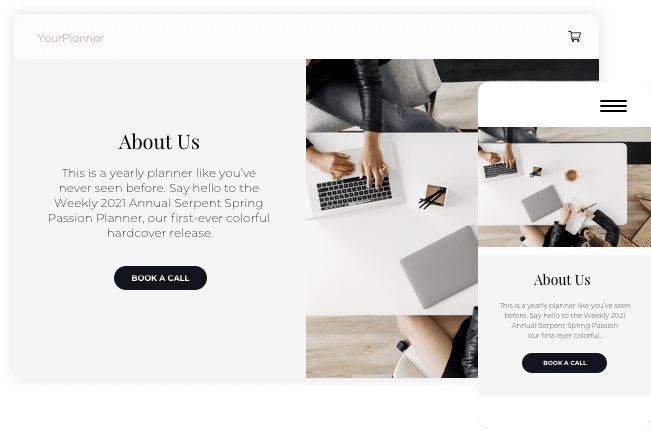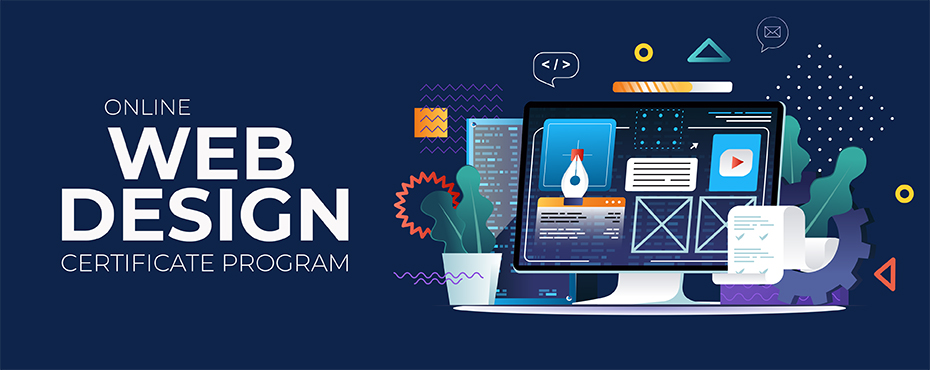Explore the Different Types of Internet Layout Provider for Your Unique Needs
In today's digital landscape, having a well-designed web site is vital for businesses and individuals alike. With the myriad of web layout solutions offered, it can be frustrating to navigate through the choices and locate the one that ideal fits your special requirements. From responsive web design that adapts to various tools, to ecommerce website design that drives online sales, to user experience (UX) layout that boosts client fulfillment, to custom-made website design that brings your vision to life-- the opportunities are countless. And allow's not fail to remember about mobile application style, which caters specifically to the expanding variety of mobile users. Whether you're a tiny company proprietor looking to establish an online existence or an entrepreneur intending to revolutionize the mobile application world, this conversation will drop light on the different kinds of internet style solutions offered, aiding you make an educated choice that aligns with your objectives.
Responsive Internet Layout
Receptive web design is a vital facet of modern web development that makes sure internet sites adjust and present seamlessly across different gadgets and display dimensions. With the raising usage of smartphones, tablets, and other smart phones, it has actually ended up being important for sites to be straightforward and easily accessible on any kind of display.
Receptive website design utilizes a combination of adaptable grids, formats, images, and CSS media queries to achieve this adaptability. It permits the internet site to instantly readjust its format and material based on the gadget's screen resolution, positioning, and size (website design company). This indicates that individuals can access the website on their computer, laptops, tablets, or smart devices without running into any type of issues or needing to focus or out to view the web content appropriately

E-commerce Website Design

With the boosting need for on the internet purchasing, companies are currently concentrating on e-commerce website design to create visually enticing and user-friendly sites that drive sales and boost the consumer shopping experience. Ecommerce website design encompasses different elements such as format, navigation, product screen, and check out procedure optimization. These components are important for bring in and retaining clients, in addition to raising conversion prices.
An effective e-commerce web style starts with an efficient design that permits customers to conveniently find the services or products they are searching for. User-friendly and clear navigating food selections, search bars, and filtering system choices are necessary for a smooth surfing experience. Furthermore, the item display screen need to display high-grade photos, thorough summaries, and consumer testimonials to construct depend on and self-confidence in the product.
Additionally, the checkout process should be enhanced for simplicity and benefit. A secure and structured settlement entrance, together with multiple settlement options, makes certain a smooth deal for the consumer. Additionally, incorporating functions such as guest checkout, order monitoring, and tailored suggestions can improve the overall purchasing experience.
Individual Experience (UX) Design
Customer Experience (UX) Design plays a critical duty in developing interesting and straightforward internet sites that prioritize the demands and choices of the target audience. When engaging with a web site or application, it entails creating and enhancing the general experience that customers have. UX designers aim to boost individual fulfillment by boosting the functionality, accessibility, and effectiveness of the website.

UX designers concentrate on producing user-friendly navigation, succinct and clear content, and aesthetically enticing interfaces. They make Homepage certain that the web site is easy to comprehend and navigate, ensuring a seamless and pleasurable customer experience.
Along with boosting functionality, UX layout additionally thinks about the emotional aspect of customer experience. Designers aim to evoke favorable emotions through visual elements, such as colors, typography, and imagery, which add to the general customer fulfillment.
Personalized Internet Layout
Personalized website design includes producing custom-made and special websites that are specifically designed to fulfill the private demands and demands of a company or company. Unlike pre-designed design templates or generic web site styles, customized web layout uses a personalized strategy that reflects the brand name identification, values, and goals of the customer.
With custom website design, every facet of the web site is thoroughly crafted to straighten with the customer's goals. This consists of the format, color design, typography, images, and total individual experience. The style process begins with a thorough understanding of the client's organization and target audience, permitting the web designer to create a site that effectively interacts the client's message and involves customers.
One of the crucial benefits of personalized internet layout is its flexibility. As the site is built from the ground up, the web developer has total control over its capability and attributes. This allows the integration of any preferred modifications, such as ecommerce capability, web content management systems, or interactive aspects.
In addition, custom-made website design makes certain that the site is enhanced for online search engine, making it much more noticeable to possible clients. By applying SEO ideal practices, such as correct keyword positioning and meta tags, the site can attain higher positions in online search engine outcomes.
Mobile App Layout
Mobile application design entails developing visually attractive and easy to use user interfaces for applications that are especially developed for mobile gadgets. With the increasing appeal of smartphones and tablet computers, mobile app style has actually come to be an essential facet of digital item advancement.

Aesthetic appeal is additionally vital in mobile application design. Making use of colors, typography, and images can produce a visually pleasing interface that records the user's attention and boosts their total experience. Additionally, integrating brand name components and maintaining consistency with the organization's aesthetic identification can aid establish a strong brand name visibility within the app.
Mobile application design also involves taking into consideration numerous technological aspects, such as gadget performance, compatibility, and responsiveness optimization - web design agency. It is vital to ensure that the app works seamlessly throughout various tools and operating systems, providing a regular experience to all customers
Final Thought
Receptive internet design makes sure a seamless experience across various devices, while shopping internet design concentrates on producing online shopping systems. Personalized web Look At This layout offers tailored services to fulfill certain requirements, while mobile application style concentrates on creating user-friendly mobile applications.
From responsive web page layout that adjusts to different gadgets, to shopping web style that drives on-line sales, to customer experience (UX) design that boosts consumer contentment, to personalized internet design that brings your vision to life-- the opportunities are limitless.An efficient ecommerce internet style begins with a well-organized design that enables customers to easily discover the products or services they are looking for. The layout procedure begins with a complete understanding of the client's business and target audience, enabling the internet developer to establish a website that properly communicates the client's message and engages individuals.
Responsive internet layout guarantees a smooth experience throughout various devices, while ecommerce web layout focuses on producing on-line purchasing systems. Personalized web style supplies customized options to fulfill specific needs, while mobile application style focuses on producing straightforward mobile applications.